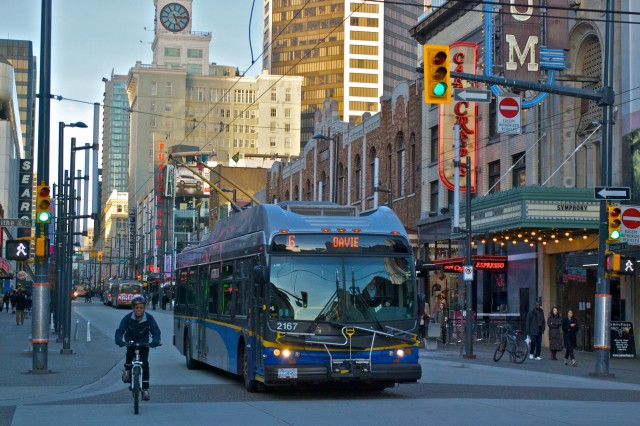TransLink 101: What is short turning?
TransLink 101: What is short turning?

We’re going back to basics again with TransLink 101—explaining TransLink and its operations!

Sometimes situations beyond our control, such as weather, road conditions or heavy traffic affect how reliable our service can be.
In the rare event that a bus is regrettably significantly behind schedule, Transit Supervisors and Transit Communications (T-Comm), the traffic control centre so-to-speak for our bus operations, use “short turning” as a way to get buses back into the schedule.
“When a bus falls behind schedule, the bus can be ‘short turned’ – meaning the operator is directed to drop any passengers off and then go directly to another location on the route,” explains Fergie Beadle, Supervisor of Surrey Transit Center Operations. “This puts the bus back on schedule and then back into service.”
Often this means a bus ending its trip short of the terminus to begin the return trip in order to get back on schedule.
On the SeaBus, short turning exists too – although its done a little differently since you can’t really shorten the route of the SeaBus! At the direction of the bridge, the SeaBus will simultaneously load and discharge passengers in order to regain schedule.
Author: Allen Tung






I remember when the #3 (used to do Davie) and #20 (used to go to Marpole) used to be much longer. Reliability has greatly improved now that those routes are permanetly short turned when they reach downtown.
We’re glad to hear that!
I was taking the #3 main street bus on Thursday night around 7 PM and i noticed two transit security officers on board, is this going to be a permanent thing.
Hi Raymond. Transit Security regularly conducts farechecks on board buses. You can read more about their work here – http://buzzer.translink.ca/2012/02/on-the-system-fare-evasion/ – and here – http://buzzer.translink.ca/2013/02/on-the-system-fare-checks-are-up-fare-infractions-are-down-a-follow-up-with-transit-security/.
I love it when Transit Security checks fares! I saw them issuing fines to a couple of people who didn’t feel they had to pay. This was great to see as I always pay and it isn’t fair when I see people who can pay but just don’t bother. It felt good to see fines issued.